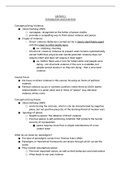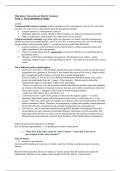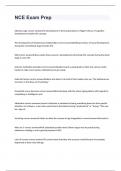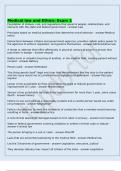Class notes
Class notes Violence & security. Paradigms and debates (FY)
- Course
- Institution
Lecture notes for Violence and Security, slides copied down, combined with Lecturer explanations (borderline word for word transcript) for the Midterm on the April 26th 2023
[Show more]






